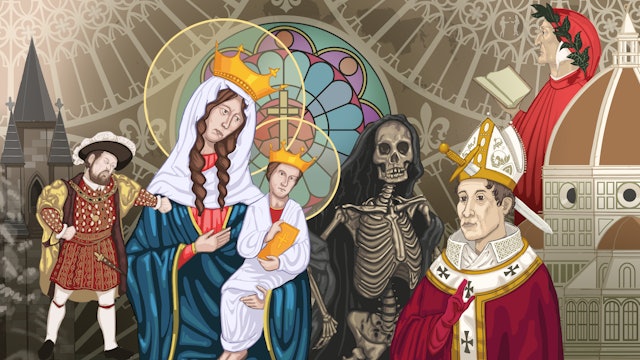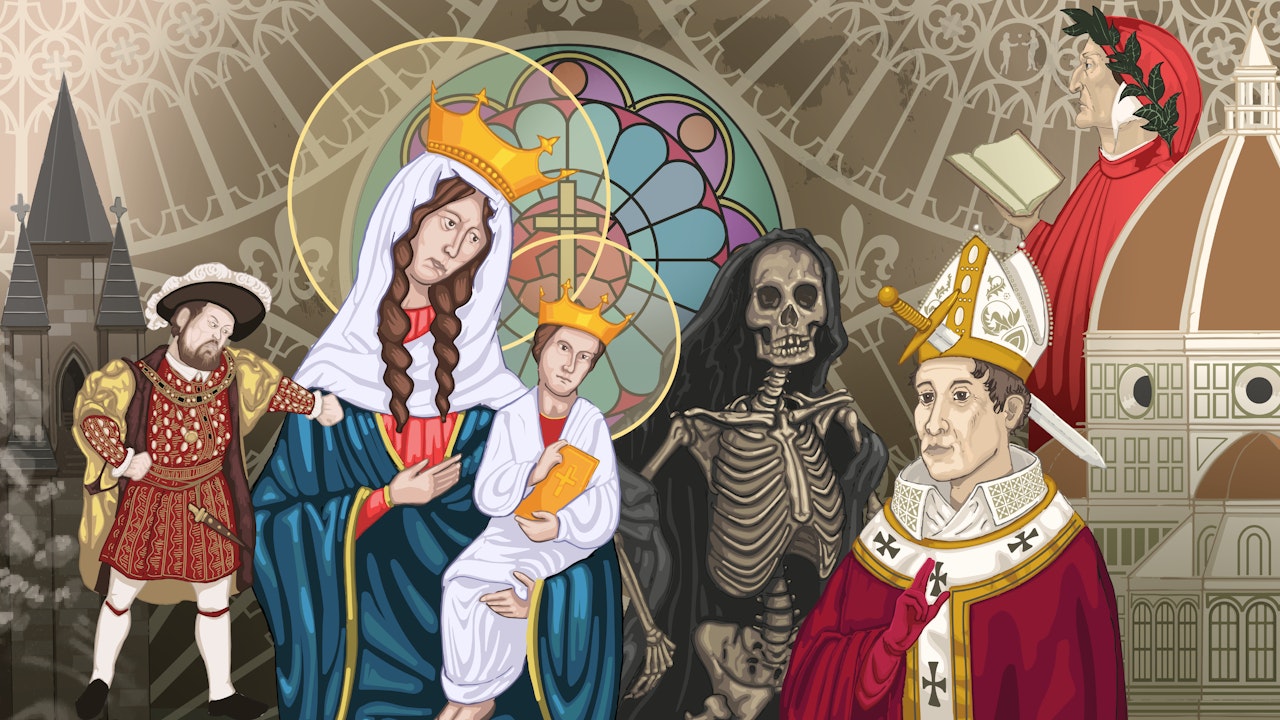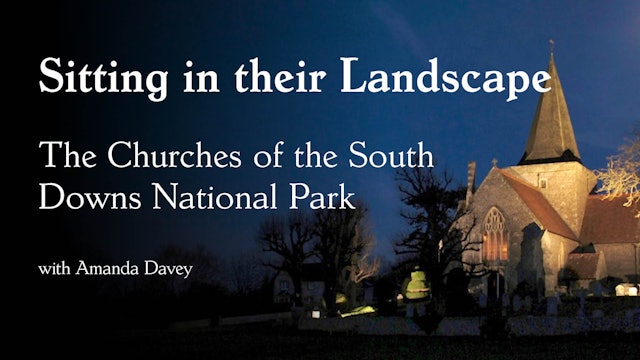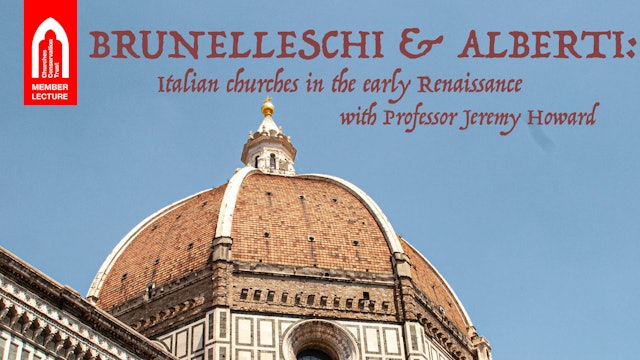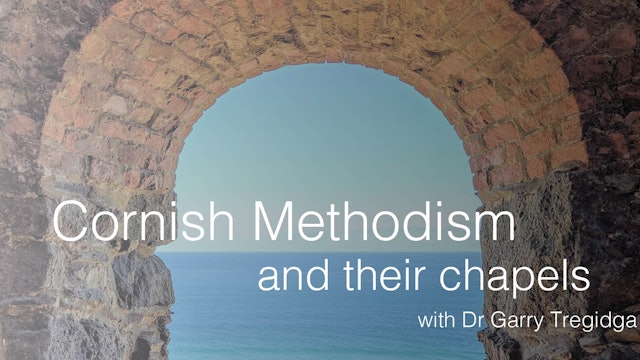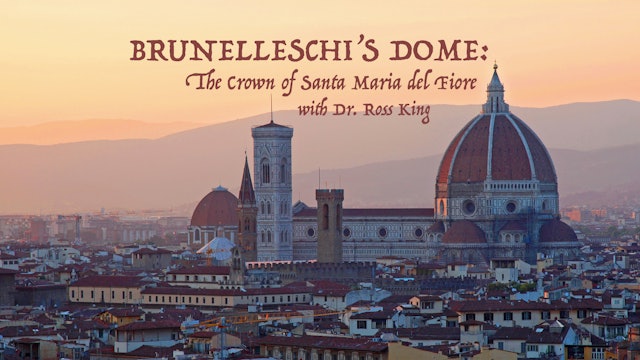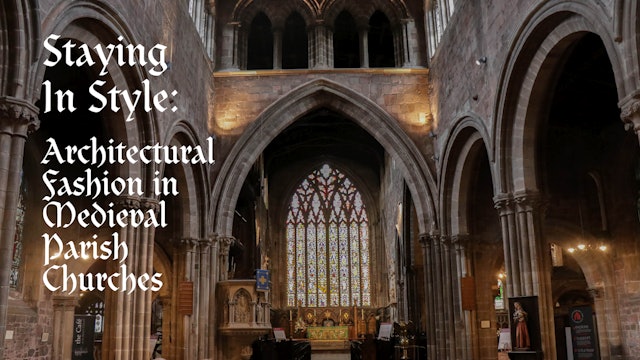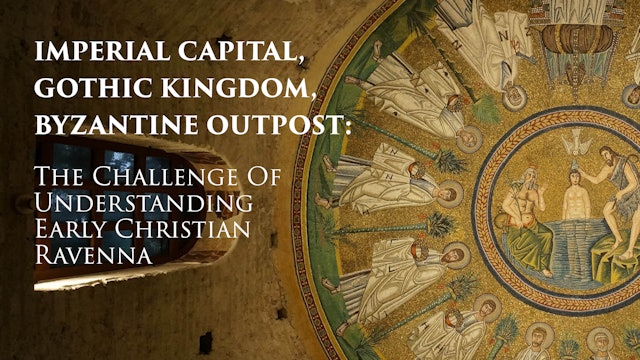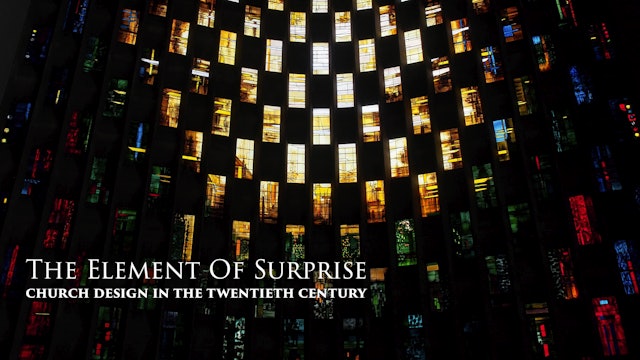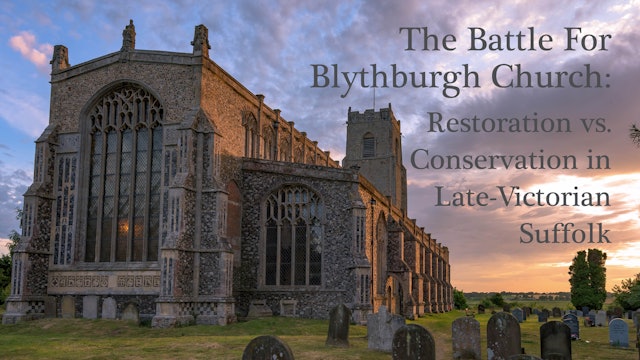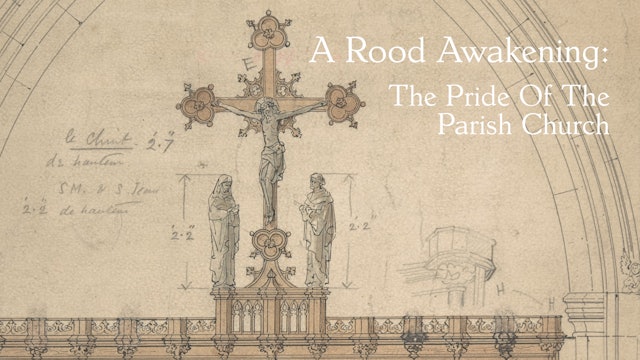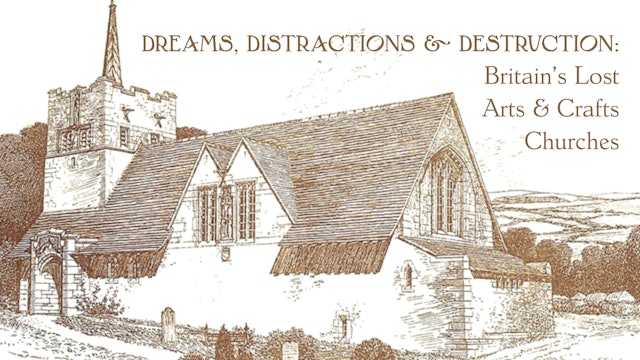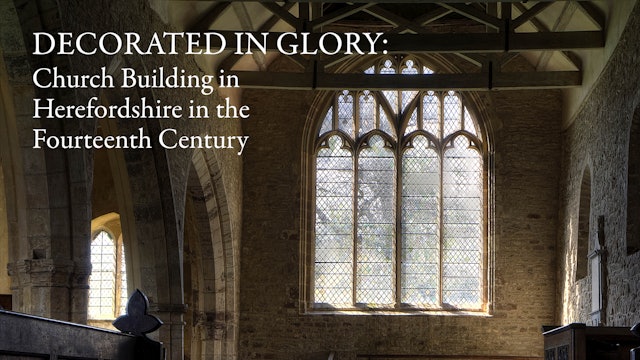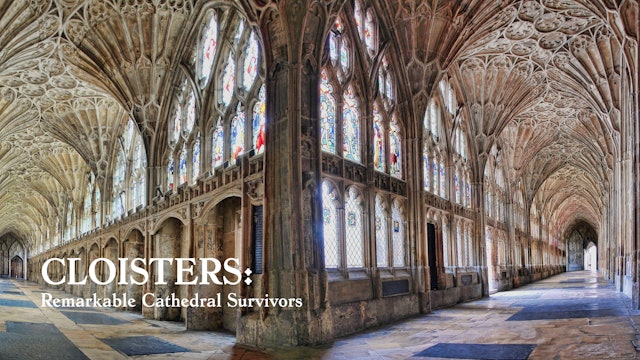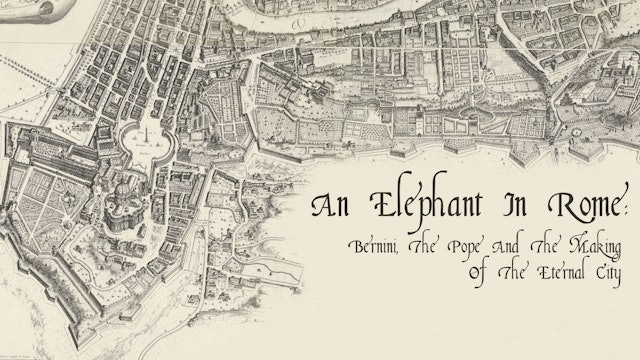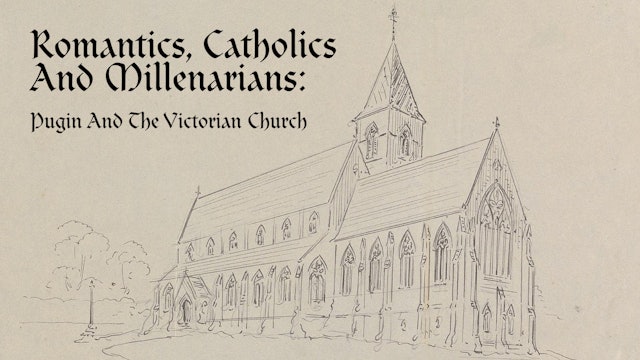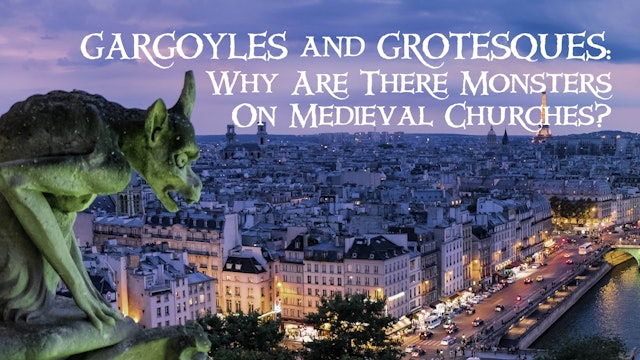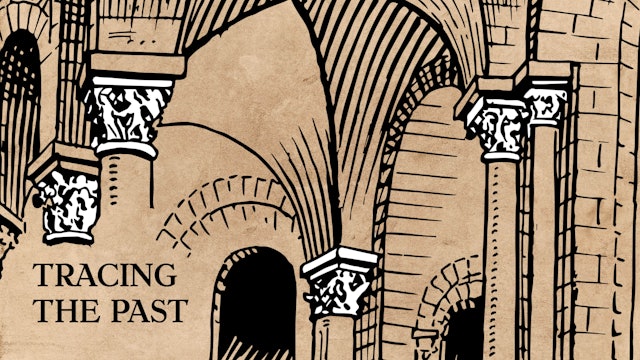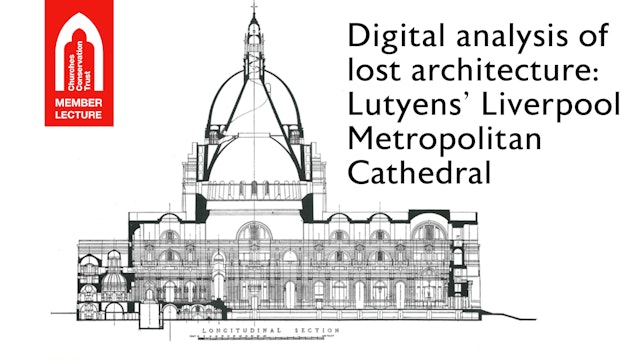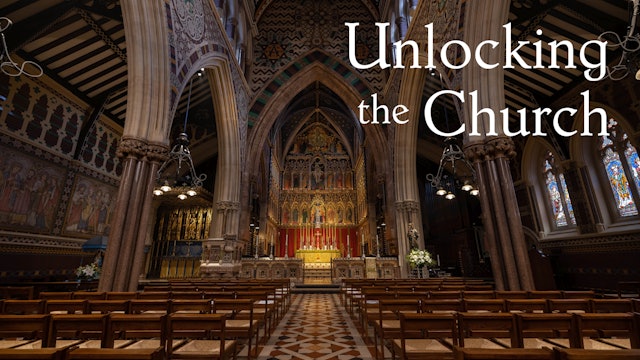-
Old Sarum, a greedy bishop and the twilight days of Norman England
Evidence suggests that Old Sarum, a vast Iron Age hillfort in the south of England was specially chosen by King William the Conqueror to be a centre of Norman power in the newly conquered kingdom of Wessex. With its vast outer Bailey, new cathedral complex and imposing motte and keep it was desig...
-
Sitting within the Landscape
Building on a project that began as the search for access to public footpaths across the South Downs National Park, Amanda has been working with her husband Simon Davey on a book to celebrate the churches, chapels, ruins and places of worship across the area - looking at how these iconic building...
-
The Brunelleschi, Alberti and Italian churches in the early Renaissance
Professor Howard has had a lifelong enthusiast for the art and architecture of the Italian Renaissance particularly in Florence, and his talk today focusses on the churches of the two great pioneering architects of the early Renaissance, Brunelleschi and Alberti, who radically reshaped the desig...
-
Remembering the Wesley Tapestry
The sketch drawing based on Gwennap Pit was the symbol used to promote the Methodist contribution to the Cornish Drama Festival of 1951. This event was itself part of that year’s Festival of Britain and brought together Cornwall County Council, the Religious Drama Fellowship, the Federation of Wo...
-
Brunelleschi's Dome: The Crown of Santa Maria del Fiore
The octagonal dome that was to crown Santa Maria del Fiore, the cathedral begun in Florence in 1294, presented the most daunting architectural puzzle of the age: how to raise the highest and widest vault ever attempted. The cupola was to have a span greater than the Roman Pantheon - the world’s l...
-
Staying In Style: Architectural Fashion in Medieval Parish Churches
Old parish churches are wonderful ways of experiencing the ways in which architectural tastes changed over many centuries. As well as being rewarding in their own right, these ever-shifting styles can be used to help put a date on the parts of a building as it develops. They also help make it a ‘...
-
Imperial Captial, Gothic Kingdom, Byzantine Outpost: Understanding Ravenna
From AD 402 to 751 the small city of Ravenna, on the NE coast of Italy, became the capital of the Roman Empire in the West, then the centre of a Gothic kingdom and finally the western outpost of Byzantine government from Constantinople. During these centuries the construction of many early Christ...
-
The Element Of Surprise: Church Design In The Twentieth Century
Many of you will be aware that Victorian elements are present in almost every church in Britain, but did you realise that this applies to the twentieth century too? Did you know that as many new churches were built in the 1960s as in the 1860s at the height of the Gothic revival? In this lecture ...
-
The Battle For Blythburgh Church: Restoration VS. Conservation in Suffolk
After decades of neglect, Blythburgh church, a grand fifteenth-century building in a small Suffolk village, was ‘mouldering into ruin’. In 1881 the church was closed as unsafe. Although the church was re-opened in 1884, proposals for restoration precipitated a twenty-five year long rancorous conf...
-
A Rood Awakening: The Pride Of The Parish Church
Join us on a historical tour exploring how and why Rood Screens came to be built that separated the congregation from the priests in parish churches. Through illustrated examples, some of the care and attention devoted to embellishing these screens by the parish congregations will be revealed. Fi...
-
Dreams, Distractions & Destruction: Britain’s Lost Arts & Crafts Churches
The Arts & Crafts church was an eccentric notion – new churches built around 1900, when Britain was no longer a church-going nation, and belief in God was no longer obligatory. And yet the aesthetic urge remained in architects, and spiritual searching still drove their clients. This talk sets the...
-
Decorated in Glory: Church Building in Herefordshire in the Fourteenth Century
The first half of the fourteenth century witnessed an extraordinary flowering of architecture, art and sculpture in Herefordshire and the central Welsh Marches. Much of Hereford Cathedral was rebuilt in these years, three exceptional parish churches were almost completely rebuilt, and gloriously ...
-
Cloisters: Remarkable Cathedral Survivors
Medieval cloisters, originally spaces linking monastic buildings, are miraculous survivors of Henry VIII’s Dissolution of the Monasteries. English cathedral communities recognised the practicalities of cloisters and experimented with cutting-edge architecture to build, improve and embellish them....
-
Full Circle - Liverpool Metropolitan Cathedral History and Conservation
This lecture will look at the history and recent conservation work on one of the countries most well-known and divisive Post-War buildings. It’s distinctive shape and vast, circular nave makes it unique in European architecture, but it has had significant and long-standing issues, some of which P...
-
An Elephant In Rome: Bernini, The Pope, And The Making Of The Eternal City
In 1655 a new Pope, Alexander VII, fired with religious zeal, political guile and a mani for building, determined to restore the prestige of his Church by making Rome the must-visit destination for Europe’s elite. To help him do so, he enlisted the talents of Gian Lorenzo Bernini, already celebra...
-
Romantics, Catholics &and Millenarians: Pugin and the Victorian Church
A W N Pugin (1812-1852) is now most famous as the co-designer of the Houses of Parliament. His greatest influence, however, was as a church architect. In his short life he transformed church design across Britain and Ireland and his influence extended to America and Australia. Born an Anglican he...
-
Gargoyles And Grotesques: Why Are There Monsters On Medieval Churches?
Gargoyles and grotesques are an immediate and appealing feature of many historic churches and cathedrals. Often carved into fantastic monsters and imaginative, bold, sometimes obscene figures, they have largely been dismissed as whimsical and indeed, incongruous with their setting, at best someth...
-
Tracing the Past: A digital analysis of the medieval vaults at Nantwich
Some of the most remarkable features of medieval works of architecture, particularly greater churches and cathedrals, are the ribbed vaults spanning their interior spaces. For over nine hundred years, they have inspired worshippers and visitors alike, their eyes drawn heavenwards by these captiva...
-
Digital analysis of lost architecture: Lutyens’ Liverpool Metropolitan Cathedral
This talk will analyse Sir Edwin Lutyens’ design for Liverpool Metropolitan Cathedral, which, according to his son, was ‘the very greatest building that was never built.’ Whilst research and critique of unbuilt or destroyed architecture is traditionally carried out through the examination of surv...
-
Unlocking the Church: The lost secrets of Victorian sacred space
The Victorians completely transformed our churches: not only building thousands, but restoring – which often meant rebuilding – thousands more. Still more importantly, they transformed how the British understood and experienced their churches. No longer mere receptacles for worship, churches beca...
-
Lady Anne Clifford: An interview with Lord Anthony Hothfield
Our Heritage Learning Officer, Steve Tarling, interviews Lady Anne Clifford's 8th great-grandson, Lord Anthony Hothfield, about his famous ancestors life, work and legacy.
-
The origins of aisles in the English Medieval Parish Church
Although it may come as a surprise, given the ubiquity of aisles in Late Antique basilicas and early medieval monastic churches, there is little evidence for aisles in English parish churches before the middle of 12th century. One of the earliest and most accomplished examples is the CCT church o...

